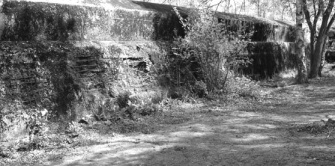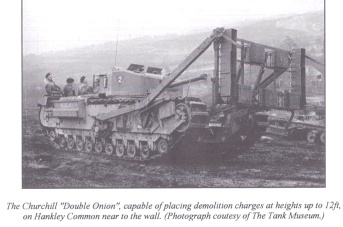The Fernhurst Society
Newsletter no 40, October 2012
Programme for autumn 2012
Wednesday 10th October |
‘An Inside View of the Antiques Trade’ by Haslemere resident Tony Creasey. He will talk on his experiences in the antiques business , but is also prepared to hold an Antiques Roadshow to discuss some of the items that members are invited to bring along |
Thursday 29th November |
We have had to change the original speaker for the talk at the AGM. |
Notices
Volunteers needed to join the Committee
After several years of stalwart service, some members of the committee are standing down this year. We are looking for new members to help run the Society. It is not an onerous task and does not take a lot of time.
If you would like to help, please contact Richard Ranft, the acting chairman, at enquiries@fernhurstsociety.org.uk
Fernhurst Neighbourhood Plan
The preparation of the Neighbourhood Plan is starting to move into the second phase. During the first phase we have been collecting views and opinions, and also identifying what the key issues that people want addressed in the Plan. This has identified some issues which are straightforward, but it has also identified some issues which are very complicated and on which there are strongly held and conflicting opinions. Change by its nature means that the future is uncertain.
If we were to have asked the sort of questions that we are now asking 50 years ago, no doubt the answers would be much the same as they are now. The result would have been that ICI would never have come to Fernhurst, West Close, the Leys and other recent developments would not have occurred, and many of us now living in Fernhurst would not be here.
There is an inherent contradiction in what we are asking ourselves. Our children and other family members of people living in Fernhurst would also like to live here, it is quite natural that we would also like that. However to accommodate these additional people more homes would need to be built. These additional homes have the potential to change the nature of the village. Which of these do we choose?
As we get older, the large family house no longer meets our needs and we look for something smaller, possibly on one level and maybe with some form of support (be it a warden or carer). Again this would mean building new properties as there are too few of this type in Fernhurst. However, by building this type of property we could attract more of this generation into Fernhurst. So can we restrict the ownership to residents who can show some connection to Fernhurst? Another consequence would be that the large family house they have vacated can be very attractive to a family seeking a rural environment in which to bring up their own family. This would increase the size of Fernhurst.
Accommodating the additional families from both of the above, whilst it is possible to justify by virtue of their connections to Fernhurst, place additional burdens upon our infrastructure. Whilst some of these burdens are easily dealt with, others such as the ability of the school to accommodate the new children and the health services to provide both for young people and older people is less easy.
Employment also creates some conflicting solutions. It is clearly a good idea to enable businesses to be set up in Fernhurst in order that they can provide employment opportunities for the people who live in Fernhurst. Some of these businesses also provide services locally which people who live in Fernhurst find valuable. However, matching the skills of local people with the needs of the businesses located here is not simple.
So in summary whilst some people who are already living in Fernhurst are asking for more homes to be built to meet their needs, others are wanting no new homes to be built unless they are on brownfield sites of which there are virtually none. How do we reconcile these differing views?
Review of Recent Events
Walk to Valewood on 27th of May 2012
28 members attended. It was intended that Iain Brown lead the walk but since he had just had a total hip replacement a few weeks prior, his wife Aphra “volunteered“ to lead supported by Helen Fox who took up the rear and Bob Kirby an amateur botanist who kept up a wonderful stream of interesting facts about the plants identified en route.
Iain introduced the area, talking of James Henry Mangles who owned Valewood House
(now a care home) and his diary about his conversations with his neighbour Lord Tennyson which were only discovered in a very wet condition in the old laundry of the house in 1961. Mangles also was famous in his life time as a pioneer of hybridisation of Rhododendrons, although today there is little sign of his activity. Iain recounted the saga of 1991 when the local residents were defacto blackmailed into purchasing 100 acres or see it fall into a developer’s hands to be subdivided into small holiday plots. £130k was raised and a further £28k to endow it before the NT agreed to accept the land which runs contiguous with their holding on Blackdown
We parked at the barns, courtesy of the NT, and walked back towards Valewood Farmhouse, immortalised in a Helen Allingham painting (she died in Valewood House in 1926), hanging a right at the small triangular parking space and round to the main object of the day – the orchids! We had to watch where we placed our feet so numerous were they but unfortunately few yet in full flower – we were about 2 weeks too early! We were regaled with fascinating info on orchid reproduction by Bob and tried our best to distinguish the difference between the main Heath spotted and the common spotted, the two hybridising freely.
Then it was on with the walk up to join the footpath to Blackdown , down the muddy sunken lane to Fernden Lane, passed Wadesmarsh Farmhouse and the curious cattle in the pasture back to the cars and tea chez the Browns . And not a drop of rain!
Iain presented Bob with a bottle of wine by way of a thank you for an apparently inexhaustible fund of nature lore.
Walk to Hankley Common 30th September
A good turnout of nearly 20 people turned up for the walk to Hankley Common. After the torrential rains of the previous week, we were lucky to have a fine day. In addition to a good walk, the objective of the day was to look at the chunk of sea wall built during the second world war to replicate the Atlantic Sea Wall built by the Germans along the French coast.
We were fortunate to have David Barrett, former colleague from ICI, as a guide and he told us about the history of the wall. The following is a copy of the notes he wrote about discovering the wall.
Together with Ken Drake, another ex ICI colleague, I first stumbled across the wall one  balmy evening in July 2004. We had been familiarising ourselves with various bird species supposedly endangered by the proposal to close the Old A3 at Hindhead. We were walking down from the ridge on Hankley Common, near Tilford when out of the gloom and surrounded by near mature trees emerged a pock marked, reinforced concrete structure, 100 metres long, 3 meters high and 3.5metres wide. In the centre was a gap 6 metres wide that at one time was closed by a heavy steel girder gate running on rollers. The wall is a replica of a section of the Atlantic Wall, which in the 2nd World War was built by the Germans along the French coast to help repel any allied invasion from Britain. We were at map reference SU 883413. During the war, raiding parties were sent ashore in France to chip samples from the wall so that an authentic copy could be made and then used to test methods of scaling and destroying the real thing.
balmy evening in July 2004. We had been familiarising ourselves with various bird species supposedly endangered by the proposal to close the Old A3 at Hindhead. We were walking down from the ridge on Hankley Common, near Tilford when out of the gloom and surrounded by near mature trees emerged a pock marked, reinforced concrete structure, 100 metres long, 3 meters high and 3.5metres wide. In the centre was a gap 6 metres wide that at one time was closed by a heavy steel girder gate running on rollers. The wall is a replica of a section of the Atlantic Wall, which in the 2nd World War was built by the Germans along the French coast to help repel any allied invasion from Britain. We were at map reference SU 883413. During the war, raiding parties were sent ashore in France to chip samples from the wall so that an authentic copy could be made and then used to test methods of scaling and destroying the real thing.
In 1943, a chap called Woods took his modified Churchill tank from the Fighting Vehicle research centre at Chertsey to SU 883413. The tank was fitted with an Onion as shown in  the accompanying photograph. The boxes on the bulldozer type frame each contained 1000lbs of high explosive and were to be placed against the wall whereupon the tank backed off paying out the 100 metres of cable that allowed the crew to detonate the charge. The result was a large bang that was heard for miles around and brought down house ceilings in Tilford. But this also created a hole in the wall 3.5m wide. The pockmarks mentioned above are the result of other live rounds fired at the wall.
the accompanying photograph. The boxes on the bulldozer type frame each contained 1000lbs of high explosive and were to be placed against the wall whereupon the tank backed off paying out the 100 metres of cable that allowed the crew to detonate the charge. The result was a large bang that was heard for miles around and brought down house ceilings in Tilford. But this also created a hole in the wall 3.5m wide. The pockmarks mentioned above are the result of other live rounds fired at the wall.
Today the wall is a large lump of alkalinity in an otherwise acid sea of impoverished sand. As such, it has become home to a community of alkaline loving lichens thus elevating it from a shelter for currently serving soldiers training on Hankley to a site of special scientific interest. Little did the Canadians troops who built the wall know what elevated environmental status their work would eventually achieve!
For more information go to www.shepheard.plus.com/atlanticwall/index.html
To find the wall, take the A287 to Farnham from Hindhead, and then branch right half a mile or so from the Hindhead traffic lights to Farnham via Rushmoor and Tilford. At the end of the Rushmoor straight (and before you reach the Duke of Cambrige pub ) there is a T junction and opposite this is an unmade track alongside a house, park there and walk away from the main road in front of the 16th Tee of the Hankley golf course (beware of fast flying golf balls!!). Walk straight on and alongside the golf course on your left; then 100 to 150 metres beyond the course bear to the right up the slope when you will see the wall in the trees.
David Barrett
Archive Report: October 2012
The Archive kicked off the Fernhurst Jubilee Weekend at the beginning of June with a Jubilees & Jubilations Exhibition with a wide-ranging display of photos, documents and other memorabilia commemorating five royal jubilees. The school were invited to provide suitably decorated cakes for what was a delightful and well-attended occasion. We also staged a wartime exhibition for the Good Companions to mark Operation Overlord and then 1953 Coronation memorabilia for their Jubilee tea party.
We have played host to many visitors over the summer, including two people who had never met, but their grandfathers had been pals during WW1 in the 2/4th London Field Ambulance Service. One of them, an ex-resident of Fernhurst brought along her grandfather’s medical satchel, medals and a silver-mounted walking stick which had been presented to him by the village on his return from the war. Another visitor came over from Australia to research her British relatives, including E J L Hope, a member of the Balfour family.
We are also having a three-way sharing of Dudman ancestry with two branches of the Dudman family.
Our old friends David and Sue Coward have been working on a survey of North Ambersham Property Owners, Occupiers and Residents 16th – 20th cent and it is hoped that we will be able to adapt their approach to work on a similar one for Fernhurst.
Interesting new information regarding the Army Camp has also come to light, that there was a contingent of ATS stationed there during the war, along with a photo of about 40 women in uniform to prove it. We hope to research this further.
Donations include WI and Stoolball items as well as Village Hall Trustees’ Meetings Minutes. We now have a complete record from 1907 to 2000.
The explanation of the house name ‘Collyns Field’ was revealed, as well as other information relating to the Timberscombe area, in a bundle of documents donated by Alan Futty.
Christine Maynard

